
Creating the Stances of the Product Owner
With the launch of a brand-new Product Owner-Advanced class (including certification), we want to introduce you to some new and unpublished content: The Stances of the Product Owner. In this article, we’ll share an overview of both the preferred and the misunderstood Stances of the Product Owner. In upcoming articles, we’ll do a deep dive into each of the Stances individually.
Before diving into the Stances themselves, let us offer you some context about their creation and purpose for being created in the first place. To do so, let’s take a look at how Product Owner role is defined by the Scrum Guide:
The Product Owner is responsible for maximizing the value of the product resulting from work of the Development Team. How this is done may vary widely across organizations, Scrum Teams, and individuals.
The Product Owner is the sole person responsible for managing the Product Backlog. The Product Owner may do all Product Backlog management related activities by themself, or have the Development Team do it. However, the Product Owner remains accountable.
The Product Owner is one person, not a committee. The Product Owner may represent the desires of a committee in the Product Backlog, but those wanting to change a Product Backlog item’s priority must address the Product Owner.
For the Product Owner to succeed, the entire organization must respect his or her decisions. The Product Owner’s decisions are visible in the content and ordering of the Product Backlog. No one can force the Development Team to work from a different set of requirements.
- The Scrum Guide, version November 2017 -
Based on the description from the Scrum Guide, you might think “That’s great, but that’s not how it works in our company”. And you’re probably right to think so. In a lot of big corporate organizations, the Product Owner role as it is defined in the Scrum Guide, isn’t (yet) how it actually works in those big companies. Hence, this is exactly the reason why we’ve created the preferred and misunderstood Stances of the Product Owner. To help you and your company get a better understanding of the Product Owner (or Agile Product Manager if you will) role. The Stances will help you to quickly identify good/preferred and bad/misunderstood patterns of Product Ownership, so that you can make the situation better in the future.
The misunderstood Stances of the Product Owner
Scrum has been around for many (20+) years already and it’s great to see that many organizations are or have been implementing Scrum in order to deliver better products for their customers. In places where people work, conceptualizing, designing and building products together, mistakes will be made. Fortunately, because it helps us all to learn and improve.
Based on many Scrum implementations, many Product Owner trainings, coaching Product Owners on the job and our own experience as Product Owners / Agile Product Managers, we have found that there are six patterns that we encounter in a lot of organizations. Or, as we’ve called them; six misunderstood Stances of the Product Owner. These stances are: The Clerk, The Story Writer, The Manager, The Project Manager, The Subject Matter Expert and the Gatekeeper. Let’s dive into the misunderstood stances of the Product Owner first:
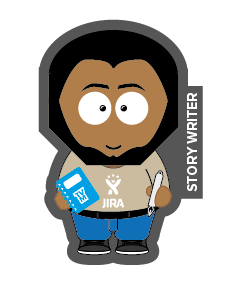
The Story Writer
You know them: curved back, eyes glued to the screen, small font size, and a 14 step template in Jira. Story, check. Acceptance criteria check. Discussions with the Developers and Stakeholders lead to an updated template or a: “The details are in the ticket.”
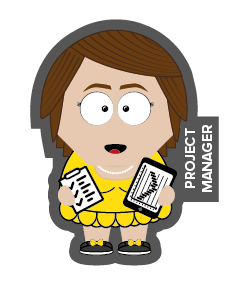
The Project Manager
Everybody knows The Project Manager, also often referred to as Output Maximizer. This PO can show you amazing graphs and schedules in Jira, (s)he knows all about velocity and predictability, and maximizing output and delivering all features is their core focus.
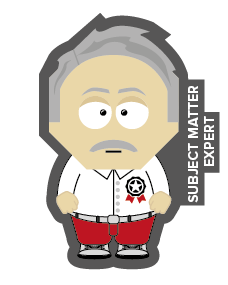
The Subject Matter Expert
“Let me fill you in on how that works.” This is what the SME is all about. They are the business experts, senior users, architects, designers, or other people with expert knowledge in their field. They know all about the details and about every bug in the software or system.
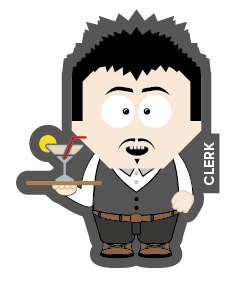
The Clerk
“Sure, we can add that to the backlog.” It is these words we hear so often which characterize The Clerk type Product Owner. (S)he aims to satisfy everybody, the customer, the stakeholders, the Development Team, and the users. However, not making any choices nor offering any vision.
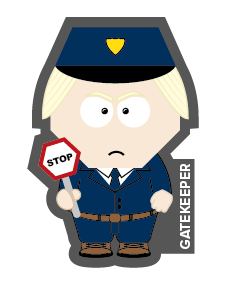
The Gatekeeper
“Look, I don’t have time for that now, just read my email from yesterday and pick the top stuff from the Product Backlog. Also, let me know when the first feature is done, so I can sign off on it, okay?” That is The Gatekeeper; always being the man/woman in the middle…

The Manager
“Are you doing fun, exciting, and innovative work today? How is everybody’s energy today? Are we all feeling well? How do you feel about your performance?” The Manager typically has many one-on-one conversations with each of the team members.
The preferred Stances of the Product Owner
When there are misunderstood or non-preferred Stances, there should obviously also be preferred Stances of a Product Owner! The preferred Stances are related to the constructive, positive, and valuable Stances that we have seen many successful Product Owners doing. The preferred Stances are The Visionary, The Collaborator, The Customer Representative, The Decision Maker, The Experimenter, and The Influencer. Let’s dive into the preferred stances of the Product Owner:
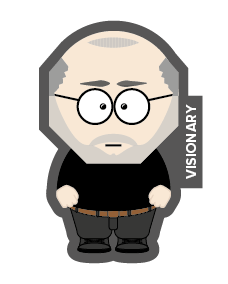
The Visionary, clearly communicating the product vision, strategy, business goals, and objectives with all the relevant parties. A visionary Product Owner tends to focus on the future, on changing the status quo, and helping people to see what could be, instead of what is.

The Collaborator, engaging with and closely working together with the various stakeholders and Scrum Team(s). A collaborative Product Owner tends to support people in their own discovery process, whether it’s about defining goals, clarifying PBIs, or analysing customer needs.
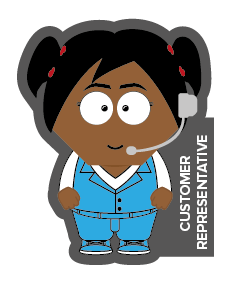
The Customer Representative focused on helping others (Developers or others) to understand what customers need, what their challenges are, what pains and gains they have. Acting from this stance, the Product Owner tends to explain how our work affects customers, users, and business processes.

The Decision Maker, which helps the stakeholders and Scrum Team to keep time-to-market short, by keeping decision making time short. All sorts of decisions have to made on a daily basis. Some can be delegated to the Scrum Team or stakeholders, some the Product Owner has to take him-/herself.

The Experimenter, by stating a hypothesis, explaining what we know AND what we don’t know, by seeing a lot of the work we do as experiments, rather than ‘set-in-stone’ work packages. The Experimenter understands the need of trying out new things, exploring, innovating, and therefore; experimenting.
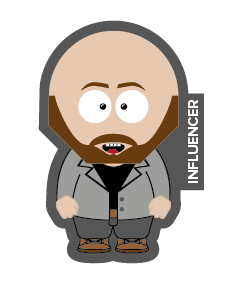
The Influencer, who helps the stakeholders to align around the product vision, strategy, goals, and objectives. Influencing the stakeholders and Scrum Team is a hard but very important job. The Influencer uses effective communication, negotiation, and influencing skills to get people to join the cause.
Go and experience it!
If you’re a Product Owner, Product Manager, Scrum Master, or Agile Coach with about a year (or more) of experience under your belt, go and explore this new class. Find a trainer to your liking or in your area, and deepen and expand your Product Management knowledge and skills. And let us know what you think about the training! What did you like? What can be improved? Let’s collaborate to take the profession of Product Ownership to the next level.
If you’d like to know more about the class and how we designed it, click here for a detailed write-up by Chris Lukassen.
If you’d like to experience this new Product Owner-Advanced class, go to Scrum.org to find a class in your area. If you’d like to participate in one of our classes, check out our Xebia Academy page for more information or inquire for an in-house class via training@xebia.com.

